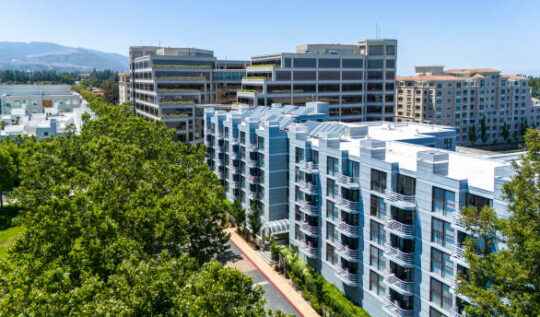DTLA High-Rise Approval: What It Reveals About LA Development Challenges
Los Angeles is in the middle of an ongoing debate over how the city should grow. On one hand, there is an urgent housing shortage, with thousands of residents priced out of the market every year. On the other hand, the process of getting a new project approved in Los Angeles is notoriously slow, costly, and filled with regulatory hurdles.
Table of Contents
ToggleRecently, the Los Angeles City Planning Commission approved a new high-rise project in Downtown Los Angeles (DTLA). The decision sparked discussion both in the development community and among local residents. Supporters pointed to the urgent need for new housing units in the city center. Critics worried about infrastructure strain, traffic, and the long history of approvals that never make it past groundbreaking.
For JDJ Consulting Group, this moment is more than a headline. It is a clear example of how Los Angeles zoning, entitlements, and planning processes directly shape the future of housing. It also demonstrates the importance of expert guidance when navigating City Hall.
What the DTLA High-Rise Approval Means
At first glance, this approval looks like a win for housing advocates. Every major high-rise approved in DTLA represents potentially hundreds of new units in a part of the city designed for density. Yet the approval itself is only the beginning of the journey. Developers still need to clear additional layers of permitting, community engagement, and compliance reviews before construction can even begin.

Key realities of this kind of approval include:
Lengthy Timelines – Even with approval from the Planning Commission, it can take years before projects break ground.
Public Opposition – Community groups and neighborhood councils often file appeals that slow down progress.
CEQA Review – California Environmental Quality Act requirements can add significant time and cost.
Market Risk – By the time a project is ready to build, interest rates, construction costs, or rental demand may have shifted.
In short, a Planning Commission approval is progress, but it is not a guarantee.
Why Approvals Take So Long in Los Angeles
Los Angeles has one of the most complex land-use systems in the country. A single project often needs to satisfy zoning codes, specific plan requirements, community plan overlays, environmental reviews, and political considerations.
Several factors explain why the process is so difficult:
Layered Zoning
Many parcels in Los Angeles fall under multiple zoning designations or overlays. These add complexity to what should be a straightforward review.Public Review Process
Every major project is subject to hearings, public comment, and potential appeals. While community input is important, it also opens the door to lengthy delays.Environmental Regulations
CEQA reviews are meant to protect communities and natural resources. But in practice, they are often used as legal tools to stall development.Political Pressure
Council districts play an outsized role in approvals. Local politics can override technical planning decisions.Resource Shortages
City departments are often underfunded and understaffed, which slows the pace of reviews and inspections.
For developers, this creates uncertainty. For homeowners near new projects, it creates frustration.
The Role of Consulting in Complex Approvals
This is where firms like JDJ Consulting step in. Our work is not only about expediting permits. It is about helping clients navigate an uncertain system, anticipate challenges, and position projects for success.
In cases like the DTLA high-rise, consulting is valuable because:
Firstly, we translate zoning codes into practical pathways for development.
Also, we manage entitlements, making sure every step aligns with city requirements.
Likewise, we anticipate opposition and help structure community outreach.
Additionally, we keep projects on schedule, even when the city’s process drags.
Lastly, we adapt to market shifts, so approvals remain viable when conditions change.
For developers and investors looking at DTLA or other growth areas, this expertise can make the difference between a stalled project and a completed building.
Lessons From the DTLA High-Rise for Smaller Developers
Not every client is pursuing a downtown high-rise. Many are focused on small multifamily properties, adaptive reuse projects, or mixed-use developments. Still, the same principles apply.
Some lessons from this case that every property owner should know:
Even by-right projects can face delays – Never assume quick approval, even if zoning technically allows it.
Community engagement matters – The earlier you engage neighbors and local groups, the smoother the path.
ADU and SB 9 opportunities are faster but still regulated – Even “streamlined” housing solutions require careful navigation.
Documentation is everything – Incomplete submittals can cause months of unnecessary delay.
In other words, Los Angeles development is a game of preparation.
Why Downtown Los Angeles Matters
Focusing on DTLA is not only about the buildings themselves. Downtown is a signal of where the city is heading.
If DTLA projects succeed, they demonstrate that Los Angeles is serious about density and housing growth.
If they fail or stall, they send a message that approvals alone are not enough, and that the system is still broken.
The approval of a single high-rise may not solve the housing crisis. But it is an indicator of how policy, planning, and investment interact in Los Angeles.
JDJ Consulting’s Perspective on the Future
At JDJ Consulting Group, we see these approvals as both opportunities and challenges. The opportunities are clear: more housing, more growth, and more revitalization of Downtown Los Angeles. The challenges are equally clear: complicated approvals, rising costs, and a city government struggling to keep pace with demand.
Our work with clients in Los Angeles focuses on building realistic strategies in this environment. That means:
Helping developers understand the real timelines and risks.
Guiding homeowners on smaller-scale zoning and permitting issues.
Advising investors on where approvals are most likely to succeed.
Positioning every project so that it does not just get approved but actually gets built.
Final Thoughts: DTLA High-Rise Approval
The approval of a high-rise in DTLA is more than a single development story. It is a snapshot of how Los Angeles handles growth. It highlights the urgent need for housing, the slow pace of bureaucracy, and the role of experts in moving projects forward.
For property owners, investors, and developers, the lesson is simple: do not try to navigate Los Angeles zoning and permitting alone. The stakes are too high, and the process is too complex. With the right strategy and consulting support, projects can move from approval to reality.
At JDJ Consulting Group, we believe Los Angeles can grow responsibly while meeting its housing needs. But getting there will take expertise, persistence, and clear navigation through one of the most complex planning systems in the nation.





